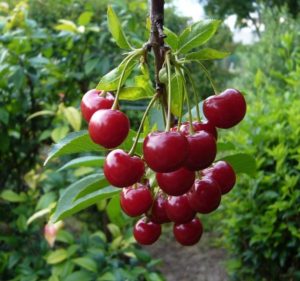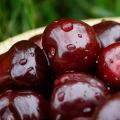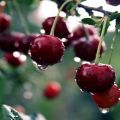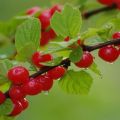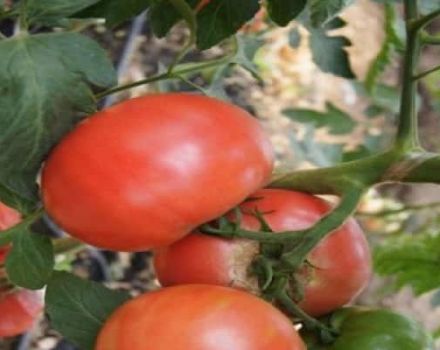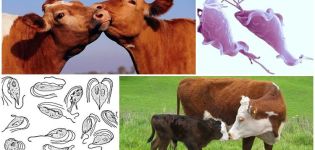Description of the Anthracite cherry variety and yield characteristics, cultivation and care
It is difficult to find a summer cottage that does not have at least one cherry variety. The fruits of the tree are very healthy and unusually tasty, they are used to prepare various dishes, add to compotes and harvest them for the winter. More than 10 years ago, the Anthracite variety was bred, which has become very popular for growing cherries in Russian orchards.
Breeding history
The Anthracite cherry tree variety was bred thanks to the efforts of breeders G. B. Zhdanov, A. F. Kolesnikov, T. A. Trofimov of the All-Russian Research Institute in Oryol more than 15 years ago, but received a registration number only in 2006. After entering into the State Register selection achievements of fruit crops, he began to gain popularity among gardeners in central Russia. It was obtained by free pollination of cherry seedlings of the Shirpotreb Black variety, chosen as the best option, corresponding to the climatic conditions of central Russia.
Description of the variety
Anthracite belongs to the species of Common cherry (Prunus cerasus), of the genus Plum. Cherry Anthracite is a partially self-fertile variety that can be harvested even if there is no pollinator. The Anthracite cherry tree is a low-growing plant that grows quickly up to 2 m. The root is powerful, deeply penetrating, tolerates severe frosts well.
The crown is spreading, the branches are strong, flexible, quickly lignified, acquiring a brown, shiny bark. Conical fruit buds are formed on raised annual branches. The bark of the tree is exposed to cracking, maroon color with longitudinal cracks.
Leaves of dark green color are curved upward, ovoid, petiolate, pointed, shiny, up to 7 cm long, veins are clearly visible below, light green color.
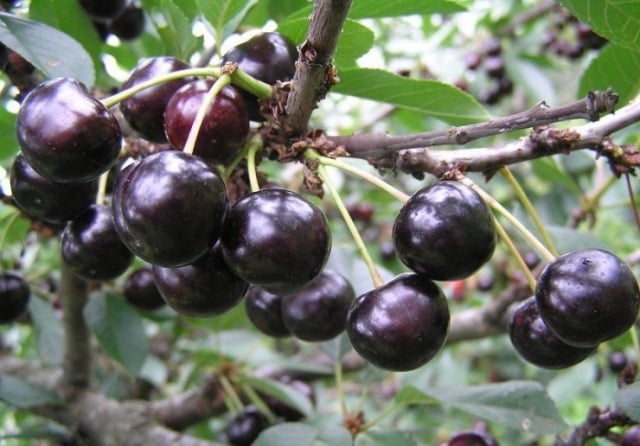
Fruits are formed on one, two-year-old branches, collected in inflorescences 2-3 flowers, less often 4-5 flowers, abundant, aromatic flowering. The flowers consist of 5 white petals, sepals, with one pistil and up to 20 stamens. After flowering, forms green fruits, which have an average ripening period (2-3rd decade of July), become maroon, almost black. The shape of the fruit is heart-shaped, rounded at the bottom, the funnel is wide, located on a short stalk up to 1.1 cm.Exocarp (skin) - thin, dense, darker than the pulp (mesocarp), juicy, sweet and sour with an average sugar content of 11-11.5% , weighing 4-5 g. The stone is small, creamy yellow, weight from the fruit to 6%, well separated.
The berries of the described variety of Anthracite cherries are classified as dessert types with high palatability with an assessment of more than 4 points.
Main characteristics
Cherry is partially self-pollinated, flowers are bisexual, but for abundant fruiting, pollinating varieties are needed Sklyanka, Shokoladnitsa, Lyubskaya, Nochka, Vladimirskaya, Shubinka, Griot Moskovsky and cherry varieties with an average flowering period:
- Frost resistance of the root system down to -37 ° C.
- Buds and young branches tolerate short-term night frosts well.
- The variety is drought-resistant, easily tolerates hot weather without watering.
- The yield is high, from 96 to 107 kg / ha.
- Resistance to diseases and pests is average, so it is almost never used for cultivation on farms.
- The fruits have a long shelf life, do not crack, and are transportable.
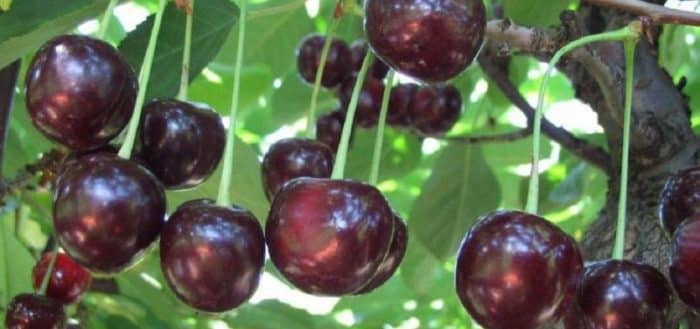
The minimum distance for planting from a pollinated tree should be from 25 m. For normal and rapid growth of a tree, soft loose soil, black soil, sandy loam with a neutral acidity level is required.
Pros and Cons of Anthracite Cherry
Anthracite cherry is more often grown in individual gardens, as it has a significant disadvantage - average resistance to fungal diseases: coccomycosis, moniliosis. Anthracite cherry tree or shrubs are short-lived, up to 15-18 years.
A big plus of the variety is its high yield, good taste, which allows you to use the berry not only fresh, but also to prepare confectionery, preserves, jams, compotes, juices.
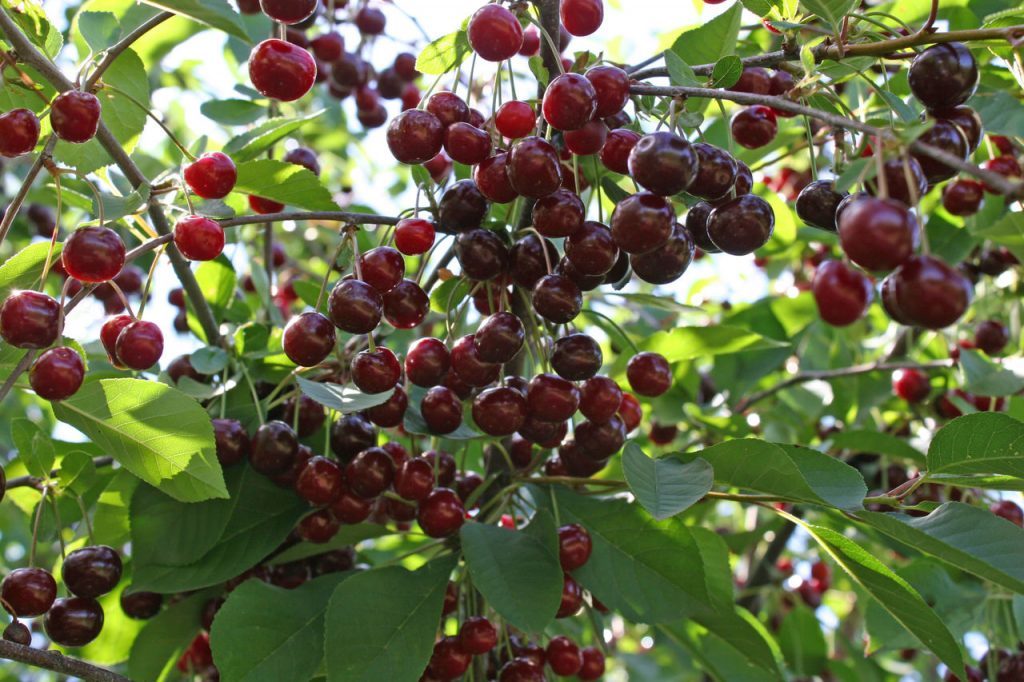
Ripening and fruiting varieties
Anthracite cherry varieties ripen in the second half of July from 15 to 25 on bouquet branches and annual growths. Fruiting begins from 2-4 years after planting and depends on weather conditions and the growing region. In the southern regions, ripening occurs in the first decade, in the northern regions by the end of July.
Growing in regions
The Anthracite variety is recommended for the Central Russia: Moscow, Bryansk, Nizhny Novgorod, Smolensk, Ivanovskaya, Tver, Yaroslavl, Oryol, Kostroma, Vladimir, Kaluga, Tula regions, and is also suitable for growing in Siberia and the Urals. Got spread in the countries of the former Soviet Union: Ukraine, Belarus, Kazakhstan, Georgia, Estonia.
The appearance of Anthracite cherry is attractive, decorative, can be used for breeding new varieties due to its qualities of rapid growth and survival of the scion, as well as for pollination. Bushes and trees have a comfortable crown and height for picking berries.
